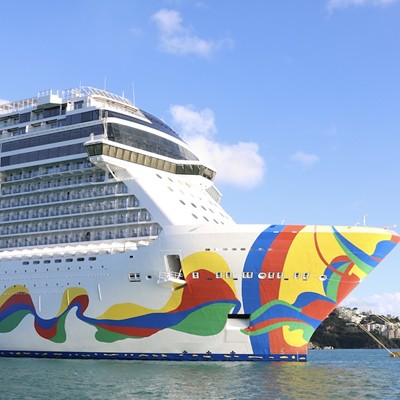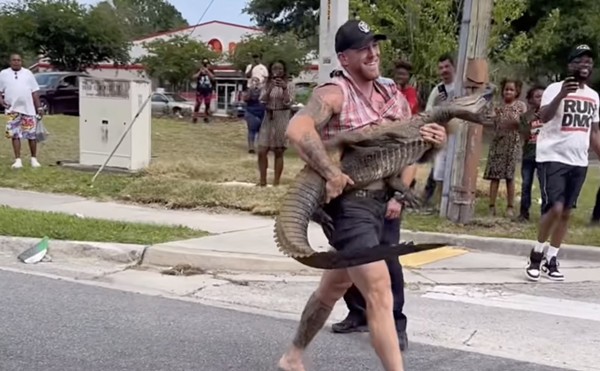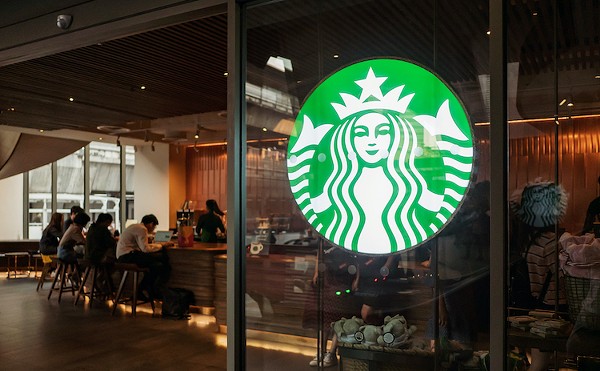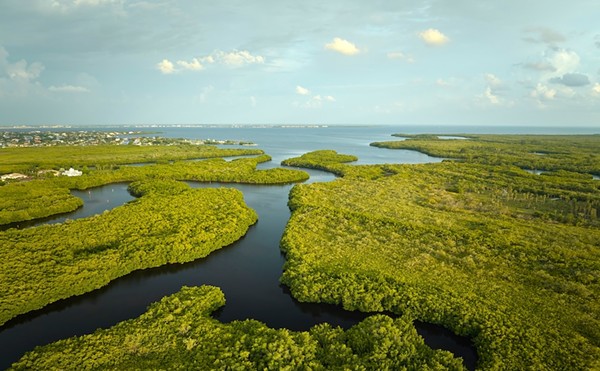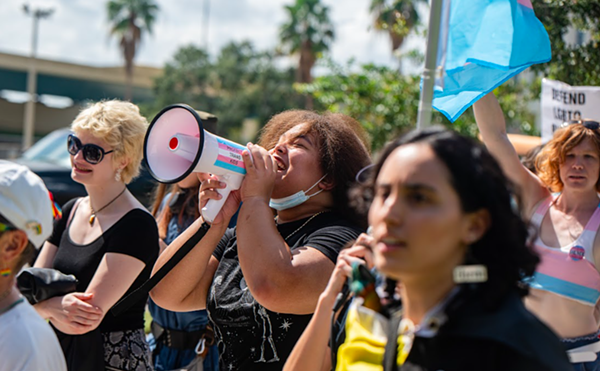Last week, Tom Connery, a project manager with the city of Orlando, hopped a Lymmo bus and found five kids with their skateboards in the back. It was a Wednesday afternoon, just after the kids got out of school. "Where do you guys skateboard?" he asked. Downtown, one responded, because there's no place else around.
Connery then told them of his latest project: building a city-run skate park.
"Yeah, we've heard that before," they answered almost in unison.
Indeed they have. The city promised skaters a place of their own 15 years ago, but liability concerns kept it on the back burner. Only since last year, with a change in state law that makes all parks "use at your own risk," could the city build a skateboarding facility without fears of multimillion-dollar lawsuits. Commissioner Patty Sheehan went to bat, securing $800,000 in the budget and getting Mayor Glenda Hood to put the project on a fast track. The city now hopes to open the as-yet unnamed park, to be located in Festival Park near the Orlando Executive Airport, in about eight months.
But early in the planning process, skaters found themselves dismayed at the city's interest in adding all kinds of amenities such as a pavilion, a kiddie playground, lights, bleachers, a concert area, a pro shop for the volleyball courts across the street and a large fountain for kids to, in Connery's words, "get their heads wet."
"It was like all these people are trying to get their hands on the money," says Tim Payne, who was tapped to design and build the park's bowl, which consists of the half-pipe and a surrounding perimeter of grind boxes, rails and stairs. "I was, like, freaking out. I don't want to see a half-assed park" because so much money has been spent on extras skaters don't need.
Payne is the heart and soul of this effort. At 42, he heads Team Pain Enterprises, a Winter Springs company that designs and builds skate facilities across the U.S., including ramps for the 2001 X-Games in Philadelphia and parks in Satellite Beach, St. Augustine, Tampa and Clearwater.
He and other skaters worried that the city's planned 10,000-square-foot skate park wouldn't nearly accommodate the hundreds of skateboarders expected to use it. They said it needed to be at least three times the size.
To their surprise, the city listened. At a public forum on May 22, about 40 skaters -- from elementary-age kids to Payne -- gathered on the ninth floor of City Hall to tell Hood, Connery and Sheehan what type of park they wanted. "We heard it. We heard it quite well," Connery says. "Overwhelmingly, the consensus was that the park was too small."
By Friday, plans had changed. Shee-han announced that she would try to get $400,000 more from the city, and Connery pledged that the skate park would be 40,000 or 50,000 square feet. About the amenities: "We'll prioritize what is important to skaters," Connery says.
While the specifics still have to be hammered out, for Payne the victory is the culmination of a battle he has waged for two long decades, ever since he was a young man building backyard ramps for kids in his East Conway neighborhood. And for many of today's skate kids, their big dream is finally on the verge of becoming reality.



